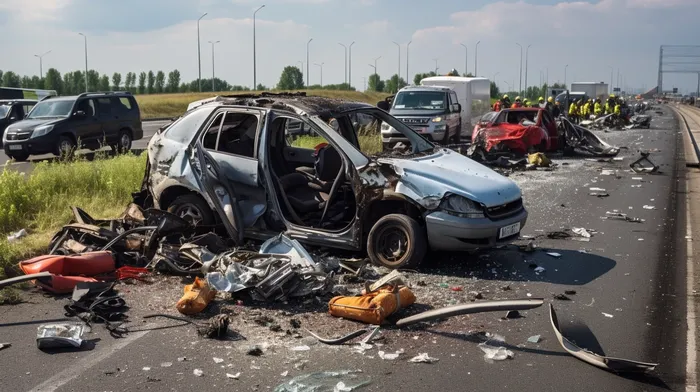For anyone carrying a significant amount of excess weight, the potential health risks are clear. Besides the more well-known issues such as heart disease, diabetes, and even certain types of cancer, a surprising danger has been identified – your likelihood of dying in a car crash increases if you are significantly overweight.
An in-depth investigation conducted through the U.S. Fatality Analysis Reporting System (FARS) reveals some concerning facts about obesity and fatality rates in car accidents. For people categorized as very obese, the danger of dying in a car accident is 80% higher compared to someone of normal weight. This increased risk of fatality also holds true for individuals who are very underweight.
A Closer Look at the Problem
The mechanics of this frightening statistic are quite simple. When involved in a collision, the lower body of an obese driver is thrown forward more forcefully before the seat belt can catch the hips and slow the momentum. The presence of excess fat around the waist can make it difficult for the seat belt to fit snugly; a looser belt allows the upper body to be held back, while the lower body continues to be propelled dangerously forward.
Adding to this precarious situation, obese drivers could be more likely to have existing health issues, making them especially vulnerable during an accident. The research, while not exhaustive, should prompt a conversation about vehicle design and safety considerations for those who are overweight or obese.
Safety Measures Need To Evolve
Given these findings, there may be a need for car designers to reconsider their approach to passenger safety. Traditional vehicle designs may provide adequate protection for individuals of average weight, but a growing body of evidence suggests that vehicles are less successful in providing the same level of protection for overweight or obese occupants.
As the USA grapples with an ongoing obesity epidemic, the need for better understanding, education, and safety measures becomes more pressing. It is crucial to push for improvements in car design to ensure that a significant portion of the population who may be at risk receives appropriate protection in the event of an accident.
What Individuals Can Do
In response to these findings, it’s essential for everyone, especially the overweight or obese population, to take matters into their own hands and create a plan for managing the risks. For example, drivers can explore additional safety features, such as side airbags or electronic stability control systems, which may provide extra stability during impact.
For those who are specifically concerned with car safety, the Insurance Institute for Highway Safety (IIHS) offers a list of the safest vehicles for every year. By reviewing the IIHS rankings and paying close attention to crash test ratings, individuals can make more informed decisions when it comes to purchasing the safest vehicle for their needs.
However, one of the most critical actions anyone can take, regardless of their weight, is to wear their seat belt correctly. Make sure the belt is snug and positioned correctly, with the lap belt going across the hips, and the shoulder strap resting in the center of your chest.
Moreover, if you find that you significantly struggle to buckle your seat belt, a seat belt extender may be a helpful solution. Several car manufacturers offer these extenders explained further in this article by Consumer Reports.
Final Thoughts
The startling connection between obesity and increased fatality risk during a car crash should be a wake-up call for everyone to prioritize their health and well-being. It is encouraging to consider that car manufacturers may adapt their designs in the future, but it remains vital that individuals recognize and address the challenges that they are currently facing. By making informed choices about vehicles and ensuring seat belts are worn correctly, everyone can play their part in upholding and promoting safety on the roads.



